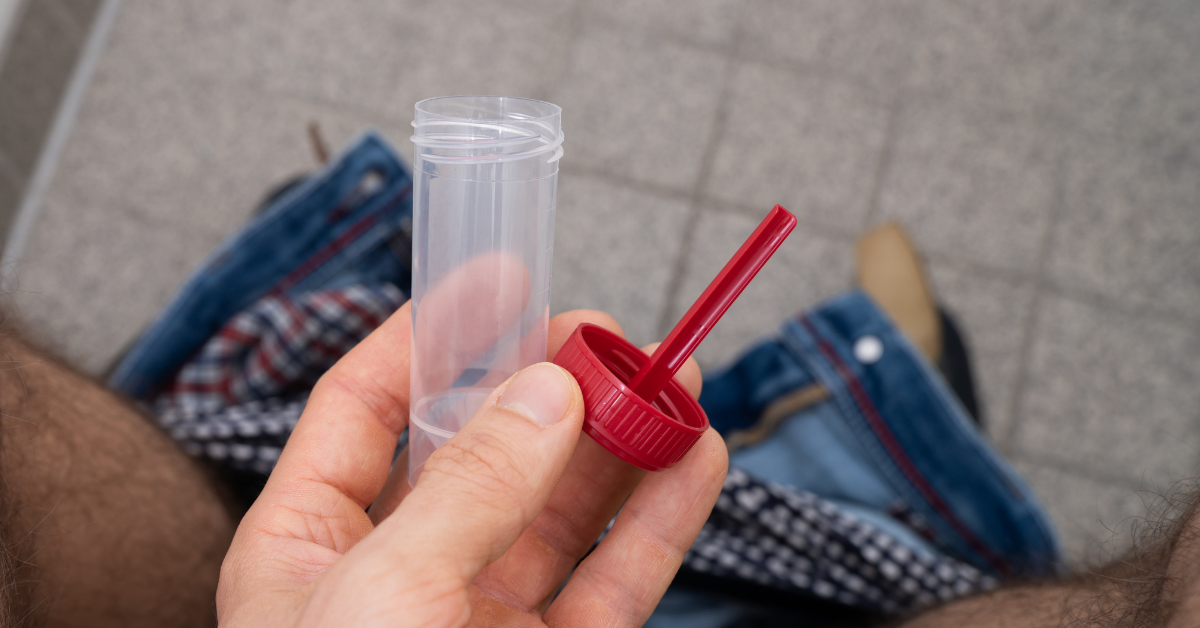
You may be interested in the convenience that Cologuard advertisements tout, but is it right for you? Here are the pros and cons every person should know about Cologuard.
Statistics show that colorectal cancer is the third most common cause of cancer deaths among men and women combined. Fortunately, it can be prevented with early screening and, just this year, the U.S. Preventive Services Task Force lowered the screening age to 45.
The most common colon cancer screening method is a colonoscopy, but you may have seen advertisements for Cologuard®. Cologuard recently gained popularity during the pandemic since it can be done at home and is less invasive than a colonoscopy. There are certainly some benefits to the Cologuard test for cancer screening, but there are drawbacks, too, including concerns about its accuracy. Here are the pros and cons we discussed with Dr. Amit Aravapalli, a gastroenterologist at Tryon Medical Partners, to help you better understand if Cologuard is right for you.
Con – Cologuard is NOT recommended for higher-risk individuals
Cologuard is not recommended for higher-risk patients that have had colon cancer, have a family history, have inflammatory bowel disorders like Crohn’s disease or have had a personal history of colon polyps. It’s not recommended for patients with colon cancer symptoms or sudden changes in bowel habits such as constipation, diarrhea, rectal bleeding or abdominal pain.
Cologuard is designed to detect cancer, not prevent it. It finds only 42 percent of high-risk large polyps and misses one in 13 cancers. In contrast, colonoscopy finds greater than 95 percent of high-risk polyps and colon cancers.
Pro – Cologuard is easy to use
Cologuard is easy to use, done at home and recommended at a frequency of every three years. It’s a combination fecal immunochemical test (FIT) and stool DNA test that looks for microscopic blood and altered DNA in the stool, and can detect cancer 92 percent of the time.
“We still have more than 50,000 people a year dying from colon cancer in the United States,” Dr. Aravapalli says. “The biggest factor contributing to this number is that up to 40 percent of Americans don’t get screened at all. Any option that makes screening more convenient and can increase the number of those screened is better than not getting screened at all.”
Con – Possibility of a false positive
False positives can create a lot of unnecessary stress and worry while you wait for follow-up testing. Almost one in six people who use the Cologuard test will have a positive result that suggests the presence of colorectal cancer. For 45 percent of those patients, the follow-up colonoscopy will show their Cologuard result was a false positive.
According to a 2014 clinical study, about 13% of results from Cologuard tests were false positives and 8% were false negatives.
“Cologuard doesn’t differentiate between cancer and benign polyps, and a positive test result can cause confusion and unnecessary worry for patients,” Dr. Aravapalli says. “In addition, there isn’t any long-term data on how this screening method affects a patient’s long-term outlook if they do develop colon cancer.”
Pro – No prep work or anesthesia necessary
Cologuard doesn’t require the unpleasant bowel preparation, sedation or insertion of a scope that comes with a colonoscopy. Patients can eat and drink normally before they collect the stool sample at home, avoiding disruption of work and daily activities.
This can make Cologuard a great option for people who take blood thinners, have serious medical conditions or are not healthy enough for the colonoscopy procedure. It’s also a great alternative way to reach patients in rural areas to help them keep up with colon cancer screenings without the hassle of driving long distances for an in-person visit.
Con – A positive Cologuard requires a follow-up colonoscopy
If the Cologuard test detects cancer in the stool sample, then the next step is a colonoscopy. During a colonoscopy, a long, flexible tube (endoscope) is inserted into the rectum. There is a tiny video camera at the tip that allows the doctor to see any abnormalities or polyps inside the entire colon and allows for removal of the precancerous polyps during the exam.
“A colonoscopy allows me to find and remove polyps and growths that over time could become cancerous,” Dr. Aravapalli says. “It’s the gold standard of prevention, and after a negative colonoscopy, patients don’t need another for a decade.”
Pro – Cologuard is covered by insurance
Typically, Cologuard is covered by insurance as a preventive screening for colon cancer, but that is dependent on your insurance plan, copay and deductible.
Con – If you need a colonoscopy after a positive Cologuard result, you may have out-of-pocket expenses
If you have a positive Cologuard and need a follow-up colonoscopy, it may be considered a diagnostic or therapeutic service and subject to co-insurance, deductibles and possible out-of-pocket expenses.
Dr. Aravapalli encourages patients to have open discussions with their doctors about colon cancer, risk factors and their family history. Choosing a colon cancer screening test may not be an easy decision, but it’s a potentially lifesaving one.
“I recommend patients talk with their doctor about the screening options and decide on the best method that fits their lifestyle and schedule,” Dr. Aravapalli says. “There is no one-size-fits-all, and the best screening method is the one you actually use.”
Patients should discuss their concerns, fears and questions about the colonoscopy and Cologuard with their primary care physician and make a plan for when to screen, which method and how often. To make your screening plan, schedule an office visit today. Together with your trusted physician, you can determine which screening method is right for you.
